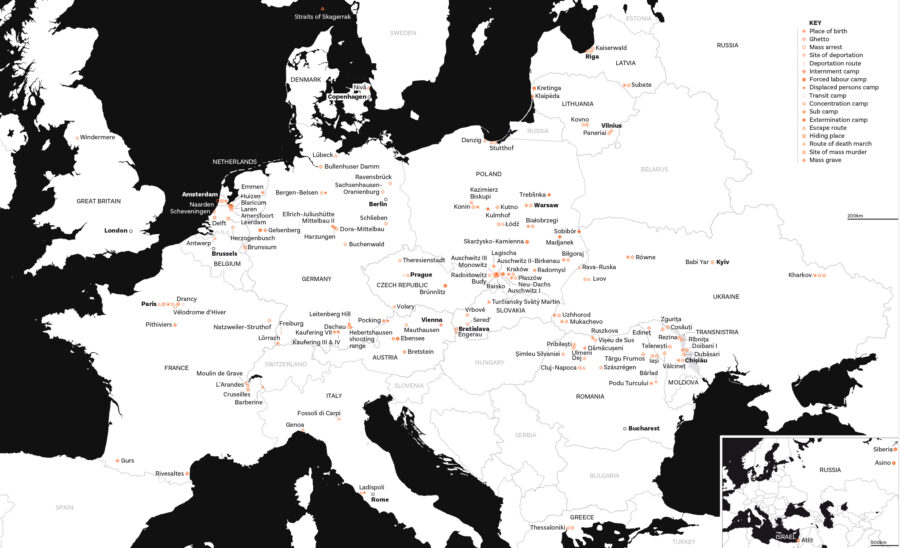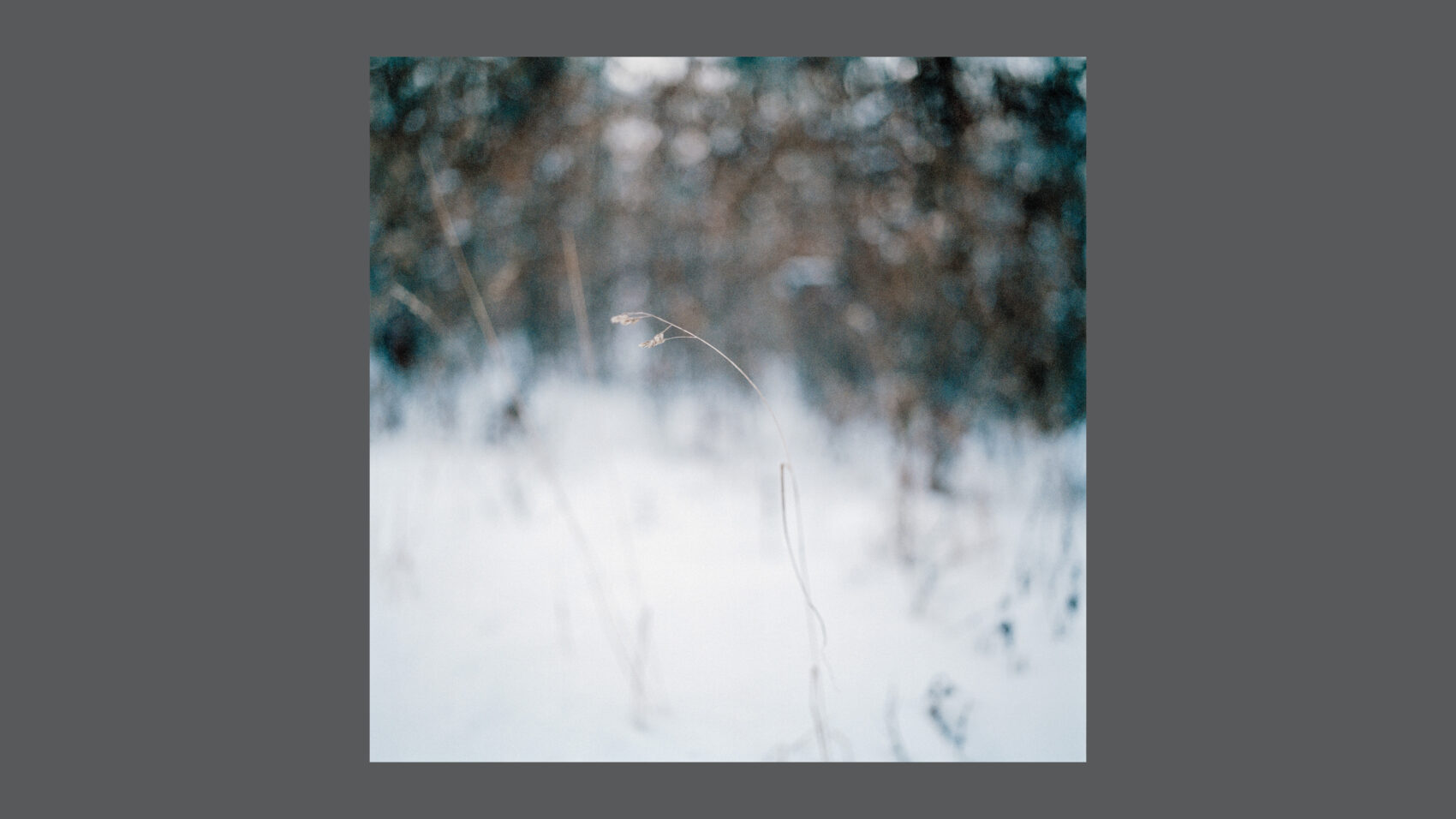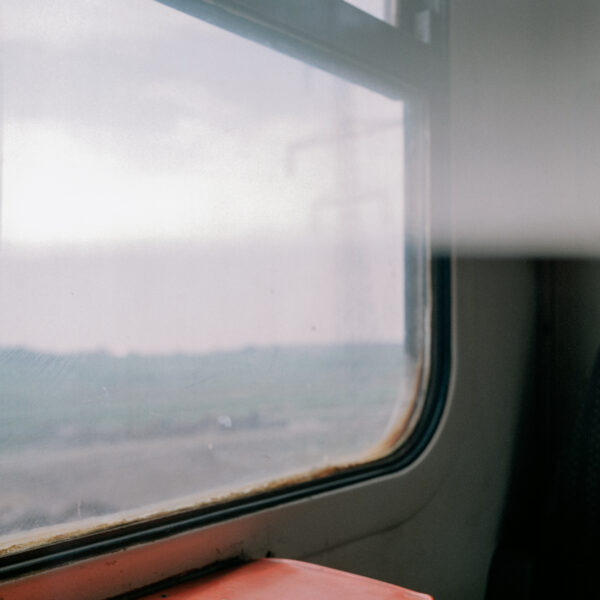Bearing Witness
James Bulgin
Some years ago I was on the Channel Island of Jersey for a short work trip. Walking up a hill towards an old Napoleonic fort, I noticed a small and ostensibly innocuous sign on a patch of grass by the side of the road. I headed towards the sign, curious about what it said, but not expecting to read what I read: This is the site of a former concentration camp.
At the time, I knew a little about the wartime occupation of the islands and far less about the fact that the concentration camp network had expanded so far. Here, on this patch of earth where people walked their dogs and children played, there had once been a concentration camp. The thought stopped me in my tracks. I had always somehow thought of Nazi atrocities as something that happened over there, in abstracted places with fixed and defined boundaries. The idea that the world in which the Nazis committed their crimes could be so close as to be inextricable with the world we live in today – my world – was not something that I had properly prepared myself to think about. It happened here.
Having spent quite some time in the years since then travelling to persecution sites and encountering the traces of Nazi crimes, I have become acutely aware of how typical the reality I experienced in Jersey is. The landscape of Europe is indelibly scarred with the physical traces of the Nazis’ campaign of persecution and annihilation. Some of these traces are conspicuous, bearing names that are recognised the world over: Dachau, Sachsenhausen, Belsen, Auschwitz, but most are far less known. Many are forgotten entirely.
These traces are not just the camps that continue to dominate the public imagination, but ghettos, sites of mass shootings, buildings constructed by slave labour and much else besides. They are found in cities, in towns and villages, in fields, forests and in all the places that people go, and all the places that people have been. Some – walls, buildings, barbed wire and bullets encased in trees – are immediately apparent, immediately visual. Others, such as the shadow of the mezuzah [parchment inscribed with Hebrew verses] removed from a door frame by owners who would never return, are defined less by their presence but by their absence. The uncomfortable reality is that there is scarcely a stretch of the territory of Europe that does not have some sort of relationship, directly or indirectly, to the Nazi genocide. Sometimes (though rarely) memorials or plaques commemorate the dark shadows of the past, however most are uncommented on. They have, in their own ways, been reabsorbed into our everyday world – not generally through wilful amnesia (although, of course, this does occur) but through practical necessity and the inexorable passage of time.
The volume and variegated forms taken by these physical traces of the Holocaust are not just a curiosity, or an evidential prompt for specialist historians, they are a cognitive challenge from those years to these ones. This challenge takes the form in an ostensibly simple but deceptively complex truth: this happened in our world. These vast and terrible acts occurred in a physical reality that is enmeshed with our own. We walk on the same ground and brush against the same walls as those who experienced it – as well as those who were responsible for it.
Although it might sometimes seem, or feel, as if those crimes are the product of a version of this world that is completely irreconcilable with our own, they are not. The nature of the atrocities committed by the Nazis and their many collaborators can easily drift into the sphere of the inconceivable, as if they occurred in a different realm or register of reality. The traces that remain – some of which are carried in this remarkable book – are a stark confrontation with the fact that they did not. The immeasurable pain and suffering caused by the Nazis was felt by bodies who experienced the world just as physically as we do ourselves. Looking at these images we are forced to reflect on this (corpo)reality – and the immense challenge of reconciling that reality with this one. This challenge is often amplified by the latent beauty that the photographs capture. It would be easier, somehow, to believe that the world of this period was cloaked in shadows and darkness and that the innate magnificence of nature made itself absent – but, of course, that was not the case.
For a while now, scholars have made the case for the critical importance of embedding the events of the Nazi past into the physical world. This is a development that has become widely known as a ‘spatial turn’. Although the volume of work that has arisen from this ‘turn’ has made an important contribution to the ways in which we think about this history, it has largely been rendered either in prose or in vectors of digital cartography and geographic information system mapping. The imagery that Marc has captured engages with the critical sensory dimensions of this engagement with questions of space and place. Whether it is in images of wide, open landscapes or claustrophobic hallways, his lens draws our attention towards detail. While looking at the photographs, our mind necessarily demands that we consider the smell, the temperature, and the feel of the environments in which they were taken; in other words, they force us to consider the ways in which we, as humans, engage with space. When juxtaposed with the accounts of the survivors and their descendants that structure, contextualise and give meaning, these images force us to confront a history that was lived in a physical world.
This confrontation between the events of the Holocaust and the physical reality of the world becomes particularly important as our visual sense of the spaces of Nazi persecution is increasingly conditioned less by contemporaneous imagery and more by the vast – and growing – volume of filmic recreations. In their highly mediated – and frequently highly inaccurate – forms, these filmic recreations introduce a visual identity to the Holocaust that is in danger of displacing the actual environments. The black and white images that come from the time, mostly taken by perpetrators, create a sense of something which is distinctly and profoundly both horrifying and unknowable. It is their generally close-cropped nature, as well as their lack of colour and stomach-churning detail, that removes them from any sort of reality that we would consider our own. The films create a sense of something that happened in physical space but seek to overdefine that physical space in order to establish a sense of visual immediacy or to serve a dramatic intention. The photography contained within this book provides a critical – and previously largely absent – detail in the way that we structure our visual sense of the past. It locates the recorded past captured in the contemporaneous imagery and the imagined past created in films in our reality. This intervention is as crucial as it is timely.
In considering the scars that mark the physical landscape, we are forced to engage with the fact that these scars were made by people. The Holocaust – as is the case with all human history – is defined not just by space, but by the relationship between space and people. What is very striking about the different types of space in which these specific things occurred, is the different ways in which the humans who were caught up in this history related to them. The testimonies provided by the survivors and the generations that followed, contained in this book, remind us not only of the radically different types of environments in which these events happened but why that matters. Experiences of persecution usually started in places that the persecuted called home. At different times and places, this developed in different ways. For some, homes were enveloped into ghettos, transforming walls that once gave a sense of belonging into walls that enclosed and confined. For others, the parks, forests and fields in which they had once formed happy memories became sites of massacre. Alongside these landscapes and environments of pre-war life brutally transformed into spaces of atrocity and murder, were the sites that the Nazis designed and developed for purpose of persecution and annihilation: the labour camps, the concentration camps, the transit camps and the death camps.
The materials used to construct these sites were frequently taken from nearby places – or stolen from the same suppliers who would have provided for normal lives in different times, thus framing and enclosing the Nazis vision for a new world in the one that existed. In a notably egregious act of desecration and genocidal intent, the foundations of sites of persecution were often cast in hardcore formed from the broken pieces of Jewish gravestones. All of these sites bear the fingerprints, literally and figuratively, of those who were confined there and those who confined them.
Perhaps most importantly, in the complex intersection between people and places, we are reminded of the highly individual ways in which these events were both experienced and perpetrated. It is all too easy to be so blinded by the vast numbers that we lose sight of the very personal and human nature of the details. By juxtaposing the accounts of the survivors with contemporary imagery, Marc has captured an important – and different – way of engaging with the individuality of experience. We become very aware of the fact that behind the vast and inconceivably overwhelming statistics are individuals whose lives – as with every life– are formed of detail. It may be the case that this is something that we are aware of intellectually as a matter of course, but here we are reminded of the infinite complexity and importance of that detail. The range of photographs also forces our confrontation with another crucial dimension of these events, and that is scale. As the range of photographs – and the maps that intersect the book – remind us, this is a history that was perpetrated over a vast landscape. Reconciling these parallel dimensions of individuality with scale is one of the biggest challenges of all.
Finally, as is the way with all photographs, Marc’s images capture the wounded landscape of the Holocaust in a specific moment in time. Their eternal stasis conceals the fact that they relate to dynamic places that are in a constant state of change. The same is true, of course, of the people. At the time of writing, the number of living witnesses to these events – survivors – is rapidly diminishing. Before long, the memory of what they saw will be carried entirely by the generations that follow. As this landscape of people and places changes, our collective memory will change too. The challenge for us all is to ensure that the impact of time does not become a process of concealment, burying the memory of these events in the same way that some of the sites have been reclaimed by nature.
Even as the physical traces continue to diminish and decay, it is clear that the central underlying truth remains; this happened in our world. It may well be the case that we would prefer to think of the things that occurred back then as a product of different people, living in different ways at a different time – but of course that is not how it is, or how it was. It is only by thinking meaningfully, critically and reflectively about the reality of these things that we are also able to comprehend how they happened. The past does not offer us a template to map onto our own realities, but it does provide ways of helping to think about ourselves and, most importantly, what we are capable of. Shaping the present and the future relies on a knowledge of – and dialogue with – the processes that brought us here. The wounded landscape captured in this book is the same one that we exist in. How we chose to engage with it will determine what form this landscape will take as we pass it on to the generations that follow.
— James Bulgin is Head of Content for the Holocaust Galleries at Imperial War Museums.





